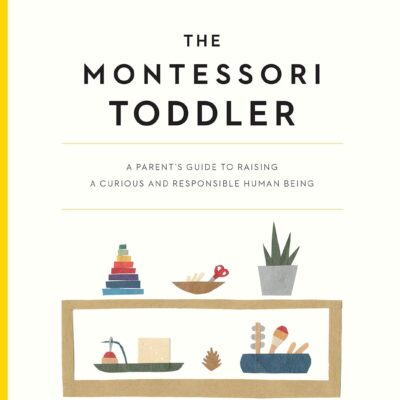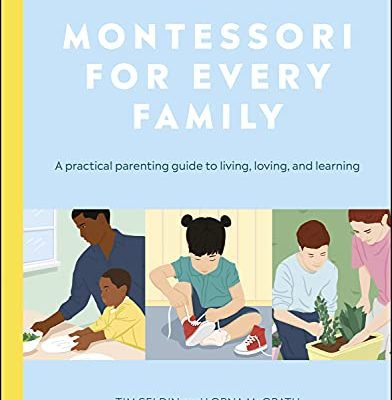
You don’t need shelves of wooden materials to raise an independent, self-assured child. Confidence isn’t born from curriculum or credentials. It grows steadily and quietly in the everyday moments that shape a child’s sense of self. Montessori understood this deeply. Her insights weren’t just for classrooms. They were rooted in a vision of the child as a capable, worthy person who grows best when given space to try, to fail, to repeat, and to master.
At home, confidence develops through rhythm, through rituals, and most of all, through trust. When we create an environment where children know what to expect, where they are included in meaningful ways, and where their efforts are respected, they begin to carry themselves differently. Their eyes light up when they pour their own water, button their own coat, or carry a grocery bag that’s just the right size for them.
For families with young children—especially those between one and a half and four—this is a golden time to lay the foundation. Parents considering Montessori school or already enrolled often ask what they can do at home to support their child’s confidence. The answer doesn’t lie in flashcards or academic drills. It’s far more personal, grounded in the way we live day-to-day with our children.
Imagine a three-year-old waking up to a calm, predictable morning. They know where to find their clothes, because the drawer is organized just for them. They get dressed themselves—not perfectly, but with pride. They sit at a small table and help pour their cereal. Later, they help sweep up a few crumbs from the floor. No one hovers or corrects. Their parents smile, say thank you, and move on with the day. These aren’t just chores. These are moments of identity-building.
Later in the day, the same child helps her father wash apples for a snack. She uses a small sponge and carefully scrubs them one by one. He doesn’t interrupt. He watches. She finishes and lines them up neatly on a towel to dry. It may take longer than if he had done it himself, but that isn’t the point. The child is learning that her work has value—that she can be trusted to contribute.
In another home, a child helps prepare for guests. Her mother shows her how to fold napkins and arrange small vases of flowers. The child feels important, not just entertained. She isn’t sent away to play while the adults prepare—she’s included. Her small hands may not fold the napkins perfectly, but the pride in her eyes says it all. She has done real work. She has been part of something meaningful.
Montessori emphasizes “freedom within limits.” At home, that can look like giving your child choices within a structured rhythm. You might invite them to help decide what vegetables to buy for dinner. They may choose between two outfits or decide which book to read at bedtime. But the boundaries remain clear and calm. Lunch is at noon. Toys are put away before bed. Trust and consistency become the backdrop against which a child can take risks and grow.
What we’re offering isn’t just independence—it’s responsibility. And responsibility is what makes independence meaningful. When a child waters the plants, helps feed the dog, or puts away clean silverware, they’re not just learning skills. They’re participating in the real life of the family. They see their actions make a difference. That deepens their connection to the people around them and strengthens their sense of purpose.
Confidence also blooms when we let our children struggle a little. It’s tempting to zip their coat or pour their juice when they fumble. But every time we rush in, we rob them of a chance to discover their own competence. Montessori adults observe, wait, and only help when needed. At home, this can feel countercultural. But when we pause—just for a few seconds longer—we often find that our children can do more than we imagined.
In a home where confidence is nurtured, you’ll hear phrases like “Would you like to try?” and “Show me how you do it.” You’ll see toddlers carrying their own backpacks, putting away their own shoes, and slicing bananas with a child-safe knife. Not because someone forced them to, but because they’ve been invited to contribute from an early age. These acts, repeated day after day, build the kind of quiet confidence that lasts a lifetime.
For parents already in Montessori schools, extending this approach into home life reinforces what children experience during the day. It helps create a seamless sense of identity. At school, they are trusted. At home, they are too. At school, they contribute. At home, they are invited to do the same.
For those just beginning their Montessori journey, it’s encouraging to know that you can begin now. No special training, no special materials—just a shift in perspective. Trust your child. Invite them in. Give them space and time. Let them pour, sweep, dress, water, stir, scrub, fold, and carry. Let them feel the dignity of work and the pride of persistence.
In this, confidence doesn’t arrive all at once. It builds over time, through dozens of small acts. And eventually, you’ll see it in the way your child stands taller, walks with purpose, and meets the world with open, eager eyes—not because someone told them they were capable, but because they discovered it for themselves.








